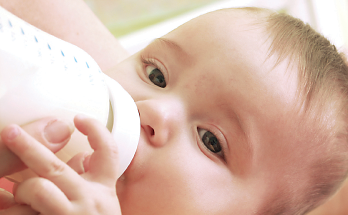The news about bisphenol A (BPA), the estrogenic industrial chemical present in many hard-plastic bottles and metal-based food and beverage cans since the 1960s, just keeps getting worse.
In January 2010, the Food and Drug Administration announced that it shares the perspective of the National Toxicology Program that recent studies provide reason for concern about the potential effects of BPA on the brain, behavior, and prostate gland of fetuses, infants, and children. The agency said it would support “reasonable steps to reduce human exposure to BPA, including actions by industry and recommendations to consumers on food preparation” while pursuing further studies of BPA’s effects.
Since then, the use of BPA in baby bottles and children’s cups has been banned in several states, and further measures are under consideration throughout the United States. Canada became the first country to ban BPA use in baby bottles.
But what about other sources of exposure to the chemical for fetuses, infants, and children? In the November Pediatrics, researchers from the Harvard School of Public Health published the most recent update of an ongoing study, funded by the National Institutes of Health, of the effects of early-life BPA exposure on behavior and executive function in children.
Joe Braun, Ph.D., a research fellow in the Department of Environmental Health at the Harvard School of Public Health, and his colleagues have been prospectively following a group of mothers and their children who were participating in the Health Outcomes and Measures of the Environment Study in the Cincinnati, Ohio, metropolitan area. The study was designed to assess low-level environmental toxicant exposures.
BPA exposure was assessed in the group using urine samples taken from the mothers during gestation and from the children at ages 1, 2, and 3. The children’s behavior was assessed at age 3 using the Behavioral Assessment System for Children 2 (BASC-2) Parent Rating Scale for pre-schoolers. Children’s executive functions were assessed by using the Behavior Rating Inventory of Executive Function-Pre-school (BRIEF-P).
“Gestational urinary BPA concentrations were associated with some neurobehavioral measures at 3 years of age in this cohort,” reported Braun and colleagues. “In particular, gestational BPA exposure was associated with higher scores for measures of anxiety, hyperactivity, emotional control, and behavioral inhibition.”
Different responses to gestational BPA exposure were especially pronounced for hyperactivity; girls exhibited increases in hyperactivity, and boys exhibited decreases. Braun and his colleagues described their findings as “consistent with numerous studies demonstrating altered neurobehavior among BPA-exposed animals.”
But they expressed reservations about their findings, citing their modest sample size as one limitation. “The clinical relevance of these findings is unclear at this point,” they said. Despite this uncertainty, they offered clinical guidance, telling clinicians to advise concerned patients to reduce their exposure, but cautioning that is it difficult to avoid all sources of exposure, and the health consequences of BPA exposure are not fully understood.
The American Chemistry Council (ACC), which represents companies involved in the chemical industry, has been quick to respond to the work of Braun and colleagues: “For parents, the most important information from this report is that the authors themselves question its relevance,” said Steven Hentges, Ph.D., of the ACC’s Polycarbonate/BPA Global Group. “The study … has significant shortcomings in study design, and the conclusions are of unknown relevance to public health.”
Hentges cited recent research that he said was funded by the U.S. Environmental Protection Agency and conducted by scientists at the government’s Pacific Northwest National Laboratory that indicates “it is very unlikely BPA could cause health effects at any realistic exposure level, because of the way it is processed in the body.”
Braun and his colleagues noted that there is considerable debate regarding the toxicity of low-level BPA exposure and that as a result their findings warrant additional research.


